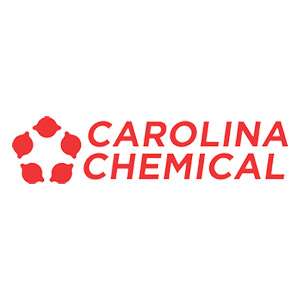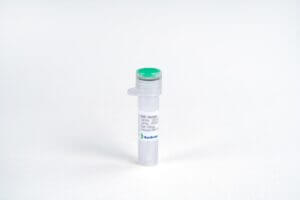100g
Showing 1951–2000 of 2169 results
-

Tetrabutylammonium Tetrafluoroborate
$301.07 Add to cart View Product DetailsTetrabutylammonium Tetrafluoroborate
-

Tetrabutylphosphonium Bromide
$109.76 Add to cart View Product DetailsTetrabutylphosphonium Bromide
-

Tetracaine Hydrochloride ≥99% – 100G
$60.72 Add to cart View Product DetailsCAS Number 136-47-0 Molecular Weight 300.82 Molecular Formula C15H24N2O2 · HCl -

Tetracaine Hydrochloride, USP
$484.85 Add to cart View Product DetailsTetracaine Hydrochloride, USP
-

Tetracaine, USP
$1,311.75 Add to cart View Product DetailsTetracaine, USP
-

Tetrachloro-p-benzoquinone
$224.83 Add to cart View Product DetailsTetrachloro-p-benzoquinone
-

Tetrachlorosilane
$55.52 Add to cart View Product DetailsTetrachlorosilane
-

Tetracosane
$283.82 Add to cart View Product DetailsTetracosane
-

Tetracycline Hydrochloride
$205.65 Add to cart View Product DetailsTetracycline Hydrochloride
-

Tetraethylammonium Bromide
$119.35 Add to cart View Product DetailsTetraethylammonium Bromide
-

Tetraethylammonium Chloride
$218.18 Add to cart View Product DetailsTetraethylammonium Chloride
-

Tetraethylammonium Chloride
$135.01 Add to cart View Product DetailsTetraethylammonium Chloride
-

Tetraethylammonium Chloride, Monohydrate, Crystal, Reagent
$257.28 Add to cart View Product DetailsTetraethylammonium Chloride, Monohydrate, Crystal, Reagent
-

Tetraethylammonium Tosylate
$164.51 Add to cart View Product DetailsTetraethylammonium Tosylate
-

Tetraethylenepentamine
$65.69 Add to cart View Product DetailsTetraethylenepentamine
-

Tetrahydrofurfuryl Alcohol
$83.52 Add to cart View Product DetailsTetrahydrofurfuryl Alcohol
-

Tetramethylammonium Bromide, Reagent, ACS
$279.37 Add to cart View Product DetailsTetramethylammonium Bromide, Reagent, ACS
-

Tetramethylammonium Chloride, Crystal, Reagent
$42.73 Add to cart View Product DetailsTetramethylammonium Chloride, Crystal, Reagent
-

Tetramethylammonium Chloride, High Purity
$77.80 Add to cart View Product DetailsTetramethylammonium Chloride, High Purity
-

Tetramethylammonium Hydroxide, Pentahydrate
$301.42 Add to cart View Product DetailsTetramethylammonium Hydroxide, Pentahydrate
-

Tetramethylammonium Hydroxide, Pentahydrate
$234.68 Add to cart View Product DetailsTetramethylammonium Hydroxide, Pentahydrate
-

Tetramethylthiourea
$278.05 Add to cart View Product DetailsTetramethylthiourea
-

Tetraphenylphosphonium Bromide
$251.95 Add to cart View Product DetailsTetraphenylphosphonium Bromide
-

Tetrazolium Blue Chloride
$2,586.17 Add to cart View Product DetailsTetrazolium Blue Chloride
-

TGFβ1, Bovine
$589.09 Add to cart View Product DetailsTGF-β1 (transforming growth factor beta 1) is one of three closely related mammalian members of the large TGF-β1 superfamily that share a characteristic cystine knot structure. TGF-β1, -2 and -3 are highly pleiotropic cytokines that act as cellular switches to regulate processes such as immune function, proliferation and epithelial-mesenchymal transition. Each TGF-β isoform has some non-redundant function; for TGF-β1, mice with targeted deletion show defects in hematopoiesis and endothelial differentiation and died of overwhelming inflammation. TGF-β1 signaling begins with high-affinity binding to a type II ser/thr kinase receptor termed TGF-β RII. This receptor then phosphorylates and activates a second ser/thr kinase receptor, TGF-β RI (also called activin receptor‑like kinase (ALK)-5), or alternatively, ALK-1. This complex phosphorylates and activates Smad proteins that regulate transcription.
-

Theobromine
$157.73 Add to cart View Product DetailsTheobromine
-

Theophylline
$82.02 Add to cart View Product DetailsTheophylline
-

Theophylline, Anhydrous, USP
$127.95 Add to cart View Product DetailsTheophylline, Anhydrous, USP
-

THE™ alpha Tubulin Antibody, mAb, Mouse
$215.63 Add to cart View Product DetailsTHE™ alpha Tubulin Antibody, mAb, Mouse reacts with mouse, human, hamster, monkey, and pig α-tubulin. This product has not yet been tested in other species.
-
![THE™ beta Actin Antibody [HRP], mAb, Mouse](https://advatechgroup.com/wp-content/uploads/2025/06/genscriptlogo.png.pagespeed.ce.m81Yfeq9O5.png)
THE™ beta Actin Antibody [HRP], mAb, Mouse
$176.81 Add to cart View Product DetailsTHE™ beta Actin Antibody [HRP], mAb, Mouse reacts with mouse, rabbit, chicken, human, hamster, cow, goat, fish, and pig substrates.It has not yet been tested in other species.
-

THE™ beta Actin Antibody, mAb, Mouse
$172.50 Add to cart View Product DetailsTHE™ beta Actin Antibody, mAb, Mouse reacts with mouse, rabbit, chicken, human, hamster, cow, goat, fish, and pig.It has not yet been tested in other species.
-
![THE™ c-Myc Antibody [HRP], mAb, Mouse](https://advatechgroup.com/wp-content/uploads/2025/06/genscriptlogo.png.pagespeed.ce.m81Yfeq9O5.png)
THE™ c-Myc Antibody [HRP], mAb, Mouse
$159.56 Add to cart View Product DetailsGenScript THE™ c-Myc Antibody [HRP], mAb, Mouse recognizes C-terminal, N-terminal, and internal c-Myc-tagged fusion proteins expressed in prokaryotic or eukaryotic cells.It also recognizes the c-Myc gene in human cancers, such as Hela whole cell lysate.
-

THE™ c-Myc Tag Antibody, mAb, Mouse
$155.25 Add to cart View Product DetailsTHE™ c-Myc Tag Antibody, mAb, Mouse recognizes C-terminal, N-terminal, and internal c-Myc tagged fusion proteins expressed in prokaryotic or eukaryotic cells.It also recognizes c-Myc protein in human cancers or cell lines such as Hela cell lysates.
-

THE™ cAMP Antibody, mAb, Mouse
$301.88 Add to cart View Product DetailsThe specificity of the antibody is defined as the ratio of antigen concentration to cross-reactant concentration at 50% inhibition of maximum binding.
-
![THE™ DYKDDDDK Tag Antibody [Biotin], mAb, Mouse](https://advatechgroup.com/wp-content/uploads/2025/06/genscriptlogo.png.pagespeed.ce.m81Yfeq9O5.png)
THE™ DYKDDDDK Tag Antibody [Biotin], mAb, Mouse
$133.69 Add to cart View Product DetailsTHE™ DYKDDDDK Tag Antibody [Biotin], mAb, Mouse recognizes C-terminal, N-terminal, and internal tagged fusion proteins.
-
![THE™ DYKDDDDK Tag Antibody [FITC], mAb, Mouse](https://advatechgroup.com/wp-content/uploads/2025/06/genscriptlogo.png.pagespeed.ce.m81Yfeq9O5.png)
THE™ DYKDDDDK Tag Antibody [FITC], mAb, Mouse
$133.69 Add to cart View Product DetailsGenScript THE™ DYKDDDDK Tag Antibody [FITC], mAb, Mouse recognizes C-terminal, N-terminal, and internal DYKDDDDK tagged fusion proteins.
-
![THE™ DYKDDDDK Tag Antibody [HRP], mAb, Mouse](https://advatechgroup.com/wp-content/uploads/2025/06/genscriptlogo.png.pagespeed.ce.m81Yfeq9O5.png)
THE™ DYKDDDDK Tag Antibody [HRP], mAb, Mouse
$133.69 Add to cart View Product DetailsTHE™ DYKDDDDK Tag Antibody [HRP], mAb, Mouse recognizes C-terminal, N-terminal, and internal tagged fusion proteins.
-
![THE™ DYKDDDDK Tag Antibody [iFluor 488], mAb, Mouse](https://advatechgroup.com/wp-content/uploads/2025/06/genscriptlogo.png.pagespeed.ce.m81Yfeq9O5.png)
THE™ DYKDDDDK Tag Antibody [iFluor 488], mAb, Mouse
$150.94 Add to cart View Product DetailsTHE™ DYKDDDDK Tag Antibody [iFluor 488], mAb, Mouse recognizes N-terminal, internal and C-terminal Flag-tagged proteins.
-
![THE™ DYKDDDDK Tag Antibody [iFluor 555], mAb, Mouse](https://advatechgroup.com/wp-content/uploads/2025/06/genscriptlogo.png.pagespeed.ce.m81Yfeq9O5.png)
THE™ DYKDDDDK Tag Antibody [iFluor 555], mAb, Mouse
$150.94 Add to cart View Product DetailsTHE™ DYKDDDDK Tag Antibody [iFluor 555], mAb, Mouse recognizes N-terminal, internal and C-terminal Flag-tagged proteins.
-
![THE™ DYKDDDDK Tag Antibody [iFluor 647], mAb, Mouse](https://advatechgroup.com/wp-content/uploads/2025/06/genscriptlogo.png.pagespeed.ce.m81Yfeq9O5.png)
THE™ DYKDDDDK Tag Antibody [iFluor 647], mAb, Mouse
$150.94 Add to cart View Product DetailsTHE™ DYKDDDDK Tag Antibody [iFluor 647], mAb, Mouse recognizes N-terminal, internal and C-terminal DYKDDDDK-tagged proteins.
-

THE™ DYKDDDDK Tag Antibody, mAb, Mouse
$125.06 Add to cart View Product DetailsTHE™ DYKDDDDK Tag Antibody, mAb, Mouse recognizes DYKDDDDK tags localized at the C-terminal, N-terminal and internal region of DYKDDDDK
tagged fusion proteins. -

THE™ GFP Antibody, pAb, Rabbit
$366.56 Add to cart View Product DetailsGenScript THE™ GFP Antibody, pAb, Rabbit specifically reacts with fusion proteins containing GFP epitope tag. This antibody can recognize all variants of GFP protein such as eGFP, AcGFP1 and cGFP. It slightly recognizes a variety of variants of RFP protein such as DsRed, DsRed2, mOrange, mCherry and tdTomato.
-
![THE™ GST Antibody [HRP], mAb, Mouse](https://advatechgroup.com/wp-content/uploads/2025/06/genscriptlogo.png.pagespeed.ce.m81Yfeq9O5.png)
THE™ GST Antibody [HRP], mAb, Mouse
$159.56 Add to cart View Product DetailsTHE™ GST Antibody [HRP], mAb, Mouse recognizes C-terminal, N-terminal, and internal tagged GST fusion proteins.
-

THE™ GST Antibody, mAb, Mouse
$155.25 Add to cart View Product DetailsTHE™ Anti-GST Monoclonal Antibody (Mouse) recognizes GST localized at
the C-terminal, N-terminal, and internal region of GST-tagged
fusion proteins. -
![THE™ HA Tag Antibody [FITC], mAb, Mouse](https://advatechgroup.com/wp-content/uploads/2025/06/genscriptlogo.png.pagespeed.ce.m81Yfeq9O5.png)
THE™ HA Tag Antibody [FITC], mAb, Mouse
$267.38 Add to cart View Product DetailsGenScript THE™ HA Tag Antibody [FITC], mAb, Mouse recognizes C-terminal, N-terminal, and internal HA tagged fusion proteins.
-
![THE™ HA Tag Antibody [HRP], mAb, Mouse](https://advatechgroup.com/wp-content/uploads/2025/06/genscriptlogo.png.pagespeed.ce.m81Yfeq9O5.png)
THE™ HA Tag Antibody [HRP], mAb, Mouse
$267.38 Add to cart View Product DetailsTHE™ HA Tag Antibody [HRP], mAb, Mouse recognizes C-terminal, N-terminal and internal HA tagged fusion proteins.
-
![THE™ HA Tag Antibody [iFluor 488], mAb, Mouse](https://advatechgroup.com/wp-content/uploads/2025/06/genscriptlogo.png.pagespeed.ce.m81Yfeq9O5.png)
THE™ HA Tag Antibody [iFluor 488], mAb, Mouse
$306.19 Add to cart View Product DetailsTHE™ HA Tag Antibody [iFluor 488], mAb, Mouse recognizes N-terminal, internal and C-terminal HA-tagged proteins.
-
![THE™ HA Tag Antibody [iFluor 647], mAb, Mouse](https://advatechgroup.com/wp-content/uploads/2025/06/genscriptlogo.png.pagespeed.ce.m81Yfeq9O5.png)
THE™ HA Tag Antibody [iFluor 647], mAb, Mouse
$306.19 Add to cart View Product DetailsTHE™ HA Tag Antibody [iFluor 647], mAb, Mouse recognizes N-terminal, internal and C-terminal HA-tagged proteins.
-

THE™ HA Tag Antibody, mAb, Mouse
$254.44 Add to cart View Product DetailsTHE™
HA Tag Antibody, mAb, Mouse (A01244) recognizes HA tags localized at the C-terminal,
N-terminal, and internal region of HA tagged-fusion proteins. -
![THE™ His Tag Antibody [Biotin], mAb, Mouse](https://advatechgroup.com/wp-content/uploads/2025/06/genscriptlogo.png.pagespeed.ce.m81Yfeq9O5.png)
THE™ His Tag Antibody [Biotin], mAb, Mouse
$366.56 Add to cart View Product DetailsGenScript THE™ His Tag Antibody [Biotin], mAb, Mouse specificly recognizes C-terminal, N-terminal, and internal His tagged fusion proteins.






